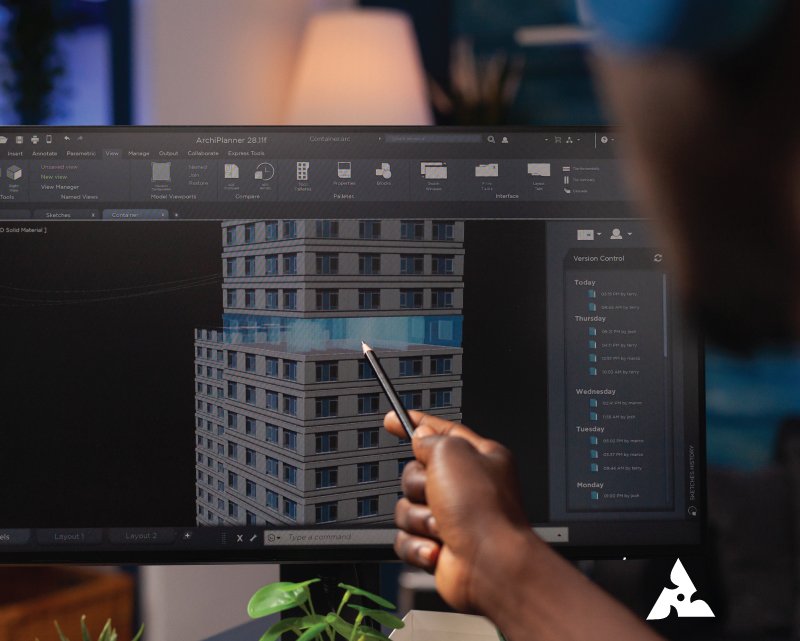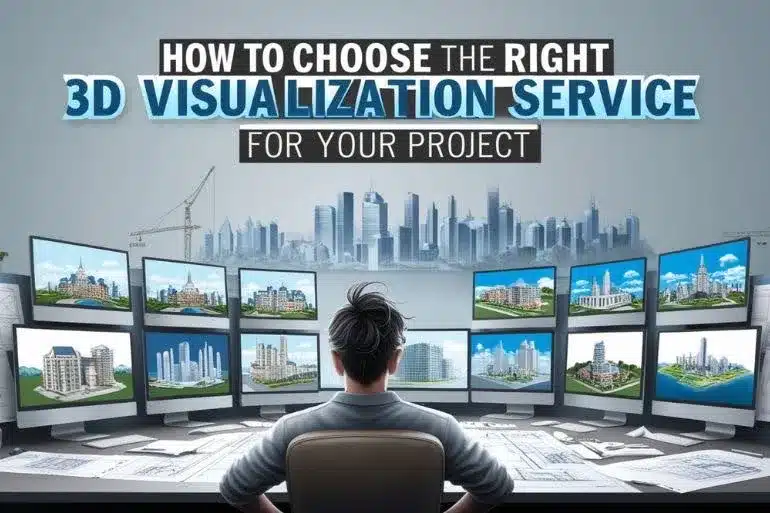How to Choose the Right 3D Visualization Service for Your Project
Table of Contents
The rapid world needs 3D visualization as an integral part of any business in architecture, real estate, product design, and entertainment. An architect is always in need of displaying his concept for a building; a product designer is often keen to view his new prototype, while a marketer may need content that captivates its audience hence, choosing the best 3D visualization service would make or break the success of the project.
How do you choose the best 3D visualization provider out of so many? This blog post will take you through the key considerations for choosing a 3D rendering company, thus making an informed decision to ensure that your project will be successful.
1. Understand Your Project's Needs
You must, therefore, set your project requirements clearly before selecting the best companies offering 3D rendering. Are you targeting static images or 3D animations? Perhaps it is for some interactive walkthrough? Do you need photorealistic output, or are you aiming for some conceptual design?
Questions to consider:
- What type of visualization do I need (e.g., still images, animations, walkthroughs)?
- What level of detail is required (e.g., photorealistic renders or conceptual visuals)?
- What is the timeline for project delivery?
Once you are clear about the details above, you can narrow your choices to those 3D visualization services specializing in the kind of visual content your project demands.
2. Review the Portfolio of 3D Visualization Providers
One of the best methods to assess the quality and capability of a 3D visualization company is through its portfolio. Most serious 3D rendering companies display previous work on their websites, Behance, and so forth.
Look at the following factors:
- Quality of work: Is the portfolio of good quality, with high-definition renders light, and textures done with much detail?
- Diversity of projects: Does the provider have experience working on projects similar to yours? Whether you’re in real estate, product design, or architecture, it’s crucial to ensure the provider’s expertise aligns with your needs.
- Visual style: Does the provider’s style match your vision for the project?
A portfolio is a reflection of the skills of a 3D visualization provider, so make sure you review it carefully and ensure that it meets your expectations.
3. Check Client Testimonials and Reviews
Client reviews and testimonials provide insight into a provider’s reputation, reliability, or communication skills. The reviews on independent resources such as Google Reviews or Clutch, in addition to reviews from the provider’s website, should be read.
Key things to look for:
- Customer satisfaction: Were clients pleased with the final results? Did the provider meet their expectations?
- Communication: Was the provider responsive and easy to work with?
- Timeliness: Was the project delivered on time, or was it delayed?
Feedback from satisfied customers and positive feedback are good recommendations for a reputable 3D visualization service with the ability to deliver.
4. Evaluate the Tools and Technology Used
The outcome of 3D visualization output entirely depends on the software and technologies used. Big providers mainly focus on very good tools or software that produce detailed and highly realistic visualizations through Autodesk 3ds Max, Blender, V-Ray, Corona Render, or even Unreal Engine.
When evaluating a service, consider the following:
- Software used: Does the provider use industry-standard software to produce high-quality visualizations?
- Real-time rendering capabilities: Are they capable of creating interactive or real-time renders? If your project requires VR or AR elements, check if the company offers this technology.
- Customization: Can the provider customize designs to fit your specific vision and needs?
Understanding the technologies used by a 3D rendering service will help you ensure that they can meet your project’s demands.
5. Think of Your Budget and Pricing Model
It’s understandable to go for the cheapest service, but be aware that high-quality 3D rendering involves both skill and time. The more complex the project, the greater the detail required, and the longer the timeline, the higher the price.
To avoid any misunderstandings, make sure to:
- Discuss pricing upfront: Ask for a clear breakdown of costs, including any potential additional fees for revisions or extra renderings.
- Evaluate the cost-to-quality ratio: Be sure that the price charged is commensurate with the quality and expertise you want from the service provider.
- Flexibility in pricing models: Some providers will offer you a different pricing model depending on the size, complexity, and urgency of the project.
Be open about your budget and discuss it early to avoid any kind of hassle during collaboration.
6. Check Communication and Project Management
An effective collaboration is impossible without good communication with a 3D visualization service. A good service provider will maintain clear communication throughout the project and inform you of what is being achieved. Find a company that has a structured project management process to meet deadlines and manage expectations.
Consider the following:
- Communication channels: Are they readily available? Can you assign an account person to the project all the way?
- Revisions and feedback: Open to making adjustments during the production process? Are some revision rounds included in the pricing?
- Project timeline: Can the company produce a realistic timeline with on-time deliverables?
There is smooth-running project execution based on proper communication and openness in their work processes.
7. Choose a Provider That Understands Your Vision
Ultimately, the best 3D rendering company for your project is one that understands and shares your vision. Look for a provider who will listen to your ideas, ask the right questions, and cooperate with you in creating that final product in your mind’s eye. His ability to capture the concept and provide valuable input is a definite indication that they are committed to delivering quality.
FAQs
Typically, 3D visualizations take their time to build. The easier the work, the more straightforward this is, often a few days to a week, but intricate animations and interactive experiences would take weeks at least. Anyway, always set a timeline upon discussing with a provider to assure them that the project deadlines have to be respected.
Most good firms offering 3D rendering have revisions in service. Be specific about your change requirements in front, like how many rounds of revisions are included with the package so that no rework delays due to changes go unnoticed, but rather align everything with what one wants at the end.
Photorealistic rendering is created to give extremely detailed, photo-realistic pictures, and usually, this method is applied when developing architectural designs or product prototypes. Conceptual rendering is focused on the idea and design itself and does not use realism. Depending on your needs, the two can be distinguished by the reason for your project and the degree of detail required for your final image.









